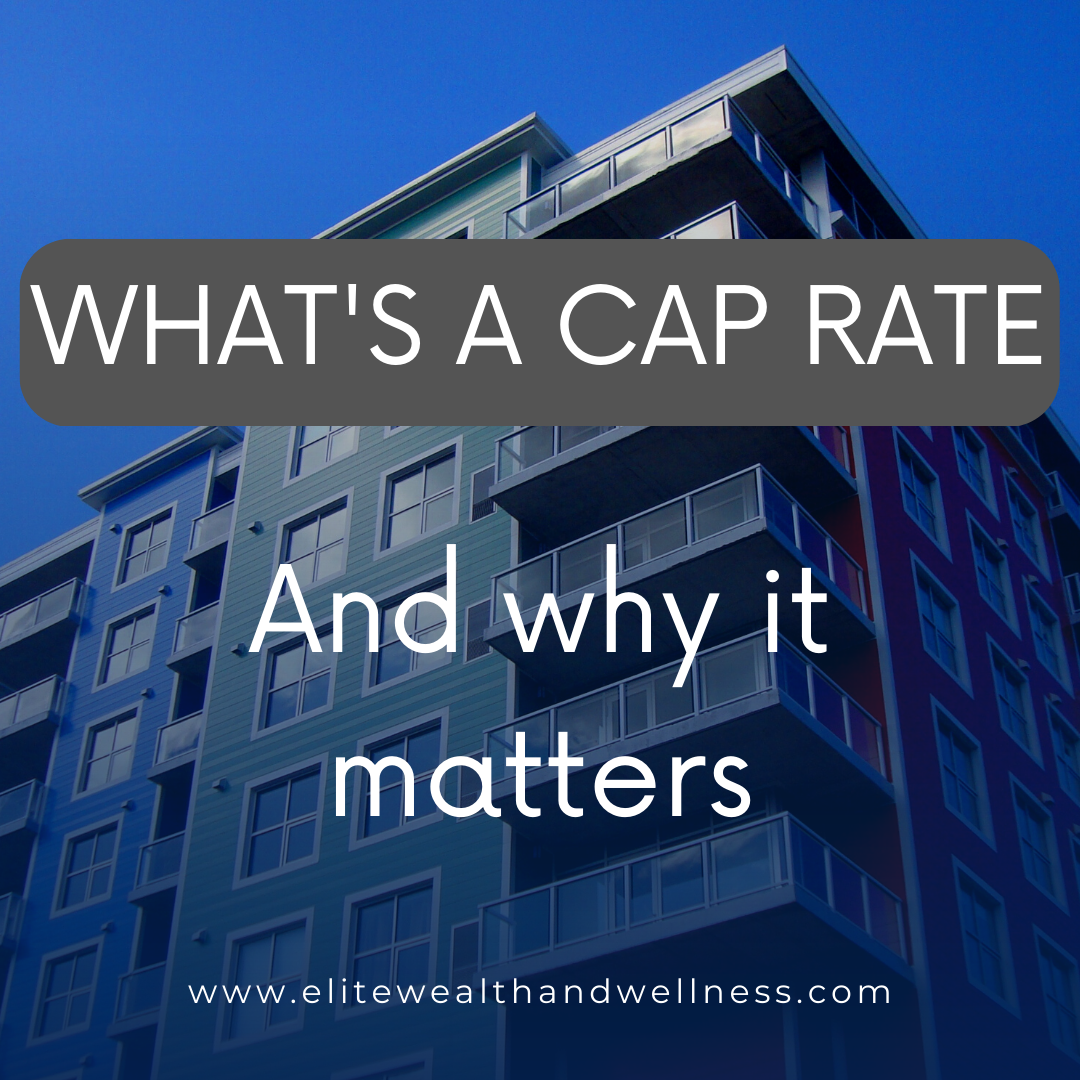Have you ever heard the term “cap rate” when listening to a conversation about commercial real estate and wondered exactly what it is or why it matters? It was one of the many things we didn’t quite understand when we first started investing!
WHAT IS A CAP RATE?
In simple terms, it’s just your annual return on investment if you were to pay all cash for a commercial real estate property. Of course no one pays all cash for a commercial real estate deal, but the CAP rate is a standardized way to understand the market pricing and property values.
For instance, if you bought an apartment for $1,000,000 (and paid all cash) and received a $100,000 annual profit (AKA net operating income), the CAP rate on the transaction would be 10%. In other words, your annual return on investment would be 10%.
The equation for CAP rate is

As seen in the equation, CAP rate is a factor of a property’s Net operating income (NOI) and the purchase price. The NOI is driven by the business income and expenses, the purchase price is driven by the current market conditions, and the CAP rate is just a biproduct of the two. That’s what confused us at first – CAP rates are simply a result of the market pricing. They are an “effect”, not a “cause”.
Typically, higher average CAP rates across the industry mean the market has softened and that purchases prices have come down.
2022 – a Case Study in rising CAP rates
2022 is a perfect example for the market’s affect on CAP rates. As interest rates have gone up, CAP rates in recent sales have drifted up. This is because higher interest rates cause higher mortgage payments (for the buyer) which in turn, causes the buyer’s NOI to go down. Remember, the mortgage interest payment is one of the bigger expenses for these deals! When this happens across the industry (as it has in 2022), it becomes a “buyer’s market” and sellers must come down on their price to keep the deals profitable for the new buyer.
As you can see in the equation below, if we assume that they buyer’s NOI goes down $10,000 (due to a higher mortgage interest payment) and the purchase price doesn’t change, the buyer’s CAP rate effectively goes down. This means the buyer is getting a lower return than what the seller was getting. Remember, CAP rate is effectively the return on investment (if paying all cash for the deal).
![]()

This phenomenon causes a general downward pressure on sales prices in order to keep the deals profitable for new buyers. If the buyer is to make the same return as the seller in the example above, the sales price must come down to $900,000 as seen in the equation below.
WHY ARE CAP RATES IMPORTANT?
While we look at the “purchase” CAP rate when we buy a property, we are even more concerned with where market CAP rates will be when we sell in 3-5 years. We call this the “reversion” CAP rate and we always assume it will be 0.75-1% higher when we sell. You can see the importance of the reversion CAP rate if we flip the equation around.
![]()
If our apartment’s NOI is $100,000 and the market CAP rate was 10% when we bought it, our purchase price was $1,000,000.

If our NOI stayed the same over 3-5 years of ownership and the average market CAP rate when we’re ready to sell is 11%, you can see that the purchase price for the new buyer goes down.

This means we would potentially be selling at a loss.
Because of this potential for the market to soften during our ownership, we always build the higher “reversion” CAP rate assumption into our underwriting and make sure we can still sell at a profit even if market CAP rates go up.
How do we still sell at a profit if CAP rates are higher when we sell? We do this by increasing the NOI during our ownership.
For example, if we increase our apartment’s NOI (by increasing income and/or decreasing expenses) to $120,000 during ownership and the market CAP rate had risen to 11%, the sales price would look like this:

So, even with a higher market CAP rate on sale, we still make a profit because we drove up the NOI of our property.
TAKE HOME POINT
CAP rates reflect the amount of return you get for a given purchase price. They are an “effect” of the market, not a “cause”.
If you’re trying to sell your property and the market CAP rates are up but your property’s NOI hasn’t changed, you’ll be selling it for less than you bought if for.
However, with the right business plan (to increase the NOI) and conservative underwriting, apartment owners can make a profit by selling even when CAP rates go up. While it’s important to know the purchase CAP rate, it is even more important to make sure that the deal will still be profitable even if CAP rates are higher at the time of sale!



0 Comments